Capricious beauty: Protea artichoke
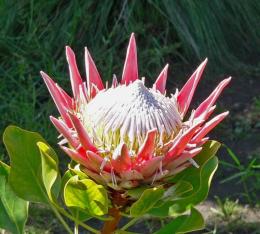
A certain Carl Linnaeus gave the name to this beautiful flower. Fascinated by diversity colors and species of the plant, he named it “Protea”. Proteus is the god of the seas in ancient Greek mythology, who is able to take on various forms.
He appeared in the form of wonderful birds and extraordinary animals, as well as in the form of water and flame, surprising everyone with his beauty. It’s not for nothing that this beautiful flower gets this name, because even in a single copy, there are leaves that differ in shape and shade. There are yellow, purple, soft pink color options. The shape of exotic flowers resembles outlandish cups, stars, and sea urchins.
Content:
- Description of protea and plant characteristics
- Growing a plant
- Caring for a risen flower
- Applications of Protea artichoke
Description of protea and plant characteristics
Protea artichoke belongs to the large family Proteaceae, which includes about 1,400 species growing in tropical and subtropical climate zones. South Africa is considered the birthplace of the flower, where it is a favorite plant of the local population. The people of South Africa even chose him as a symbol of the state.
And in our country, protea is a favorite of flower growers. Its hedgehog-like needles look quite impressive, and its leaves are original. The conditions in which the flower grows in its homeland are quite harsh:
- monsoon climate
- poor the soil
- prolonged droughts
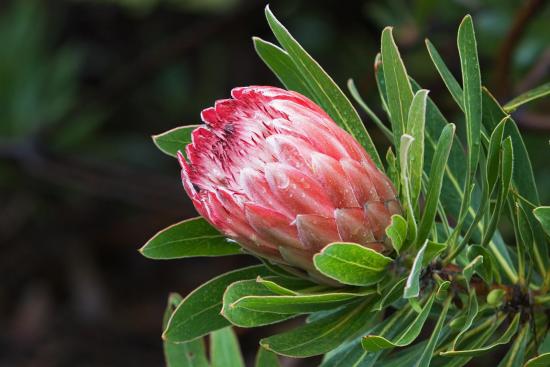
This climate affected the appearance of the protea.Its leaves look like needles, and the flowers grow in large groups to protect them from winds and create shade in the growing area. This way the earth does not heat up to critical temperatures and the moisture does not evaporate completely. A number of species have special underground stems for accumulating water.
But the most important feature for which protea is loved is its huge, spectacular inflorescences of bright colors. The diameter of a number of them is thirty centimeters! This crop is not as easy to grow as many gardeners would like. But with its beauty it deserves that flower lovers try to keep it. White and orange, yellow and lilac shades of color are combined in bright and colorful combinations.
Growing a plant
In places where it grows: Africa and Australia, the plant is in great demand and grows well in parks and gardens. But the conditions of the temperate climate of our latitudes do not allow growing a flower in open space. It can be successfully planted only in greenhouses or botanical gardens. But, despite this, persistent protea lovers are trying to grow it at home. And they succeed! The following parameters will be comfortable for Protea artichoke:
- Abundance of sunshine
- Lighting in cloudy weather
- Frequently ventilate the room
Maintaining a temperature of at least +25 degrees in summer. The plant reproduces by seeds. Before planting, they must be soaked; to do this, place the seeds in wet sand and keep them in the cold for several weeks. Immediately before sowing, the seed is immersed in warm water for 24 hours. For the substrate, use soil for azaleas; fine sand and perlite can be added to it.
This will improve the growth of the plant.The pots selected are not deep, with a large base diameter. Drainage is placed at the bottom, and soil is placed above. The seed is planted at a depth equal to two times its length. When the protea is planted, it is watered with boiled water and covered with a film on top to maintain the greenhouse effect. From time to time, do not forget to ventilate the plant by removing the cover
Video about Protea artichoke:
Caring for a risen flower
Germination occurs after five to seven weeks. When the first two leaves hatch, the film is removed and the pot is placed in the sunniest place in the apartment. What care does Protea require? The most important thing is not to overwater the flower, as this can cause its death. Watering is carried out with settled and slightly acidified water. Special fertilizing does not require protea. When sunlight and ventilation are provided, we can only wait for the capricious flower to grow.
This process is quite long, because indoor protea will bloom only after five to six years. The flower is generally not pruned, only after flowering the inflorescence is cut off and the shoot is shortened by ten centimeters.
With intensive growth, in the spring before replanting, you can shorten the branches by a third of their length. But replanting the plant needs to be done quite often. Young, not yet flowering proteas are planted every year. At the beginning of spring, they change the pot to a larger one, but it is important to keep the entire lump of earth with roots intact. Adult plants are transplanted only if they have completely filled the space of the flowerpot with roots.
Applications of Protea artichoke
Where it grows, Protea artichoke is called the “honey pot” because its nectar is used as a cough medicine.It does not grow in our latitudes, so it has not found wide use.
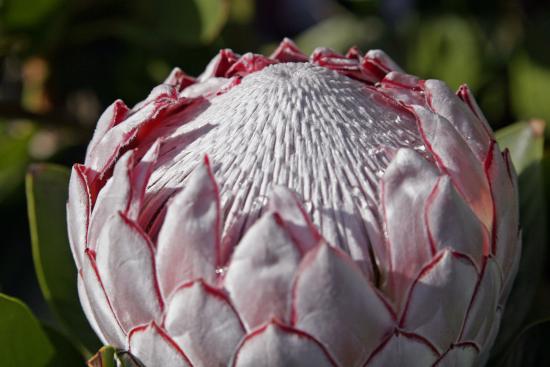
But her dried flowers are very beautiful and suitable for creating collages and paintings. An overseas flower brings exoticism and charm to them. Almost everything varieties The plants dry out well and keep their shape well, only after a while their color fades.

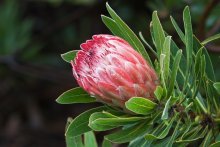
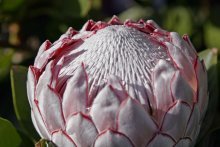

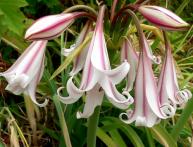



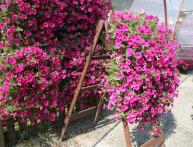

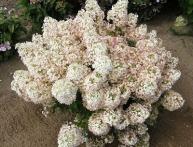
Comments
An incredible, exotic flower - it is the size of a small sunflower. Apparently its stem is strong enough to support the weight of a huge flower. I have never seen Protea, either in greenhouses or in botanical gardens.